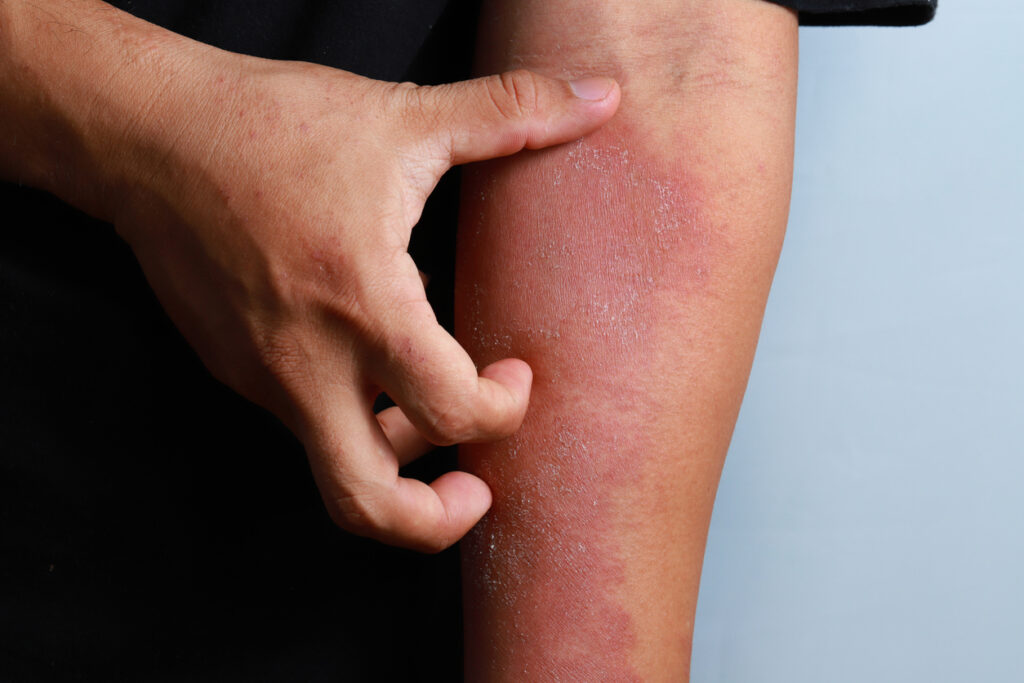Ruxolitinib cream 1.5% (Opzelura, Incyte) significantly improves the clinical signs of atopic dermatitis (AD), including improved itch as early as Day 2, and is well-tolerated in adults with moderate AD who had an inadequate response, intolerance or contraindication to topical corticosteroids (TCSs) and topical calcineurin inhibitors (TCIs), new research shows.
At Week 8, 70% of patients treated with ruxolitinib cream achieved a ≥75% improvement in the Eczema Area and Severity Index (EASI-75) and 61.3% achieved Investigator’s Global Assessment Treatment Success (IGA-TS), co-primary endpoints of the study, which was presented at the 15th Georg Rajka International Symposium on Atopic Dermatitis (ISAD) in Melbourne.
Based on these results, Incyte expects to file a Type-II variation application for ruxolitinib cream 1.5% for the treatment of adults with moderate AD in the European Union (EU) by end of the year.
TRuE-AD4 is a randomized, double-blind, vehicle-controlled Phase 3b study designed to evaluate the efficacy and safety of ruxolitinib cream in adults with moderate AD. The study enrolled 241 patients (≥18 years old) who meet the specific inclusion criteria, including an IGA score of 3 and an EASI score greater than 7 at both screening and Day 1 and who have AD on 10% to 20% of their Body Surface Area (BSA; excluding scalp). Patients also had to have a documented history of inadequate response, intolerance, or contraindication to TCSs TCIs within the 12 months prior to the screening visit. Patients were randomized 2:1 to receive Opzelura administered twice daily (BID) or vehicle (non-medicated cream) BID.
The new data build on previously announced topline results.
Patients treated with ruxolitinib cream demonstrated improvement in EASI-75 (43.8% vs. 3.7%) and IGA-TS (29.4% vs. 2.5%) at Week 2. More patients treated with ruxolitinib cream achieved both EASI-75 and IGA-TS at Week 8 than vehicle (59.4% vs. 13.6%).
Additional key findings include:
- Improvement in itch as measured by a ≥4-point improvement in Itch Numeric Rating Scale (NRS4) score.
o Nearly two-thirds of patients treated with ruxolitinib cream achieved Itch NRS4 by Week 8 (vs. 19.8% with vehicle).
o There was significant improvement in worst daily itch at Day 2 with 29.1% of patients treated with ruxolitinib cream achieving Itch NRS4 vs. 14.3% with vehicle.
o Current Itch NRS4 was also measured at 15 minutes (16.4% with Opzelura vs. 7.7% with vehicle).
- Improved Patient-Oriented Eczema Measure (POEM) and Dermatology Life Quality Index (DLQI) scores:
o More patients treated with ruxolitinib cream vs. vehicle achieved a POEM score 0–2 (Clear or Almost Clear) at Week 8 (39.7% vs. 8.6%).
o Patients showed a mean DLQI score improvement at Week 8 (from 19.3 to 4.3 with ruxolitinib cream vs. 19.1 to 10.7 with vehicle).
- Ruxolitinib cream was well-tolerated with no serious infections, major adverse cardiovascular events (MACE), malignancies, or thromboses reported during the 8-week vehicle-controlled period. The most common treatment-related adverse event observed in the Opzelura arm was application-site acne (4.4% vs. 0% in the vehicle arm).
“TRuE-AD4 offers compelling support for the utility of Opzelura for patients with moderate AD who have limited treatment options due to inadequate responses or intolerances to TCS and TCI-based topical therapies, who may otherwise be recommended for systemic therapy,” says Andreas Wollenberg, MD, PhD, Professor of Dermatology and Allergy, Augsburg University Hospital, Germany. “AD is a challenging, chronic condition, and I believe that these data reinforce Opzelura as an important therapeutic option.”


